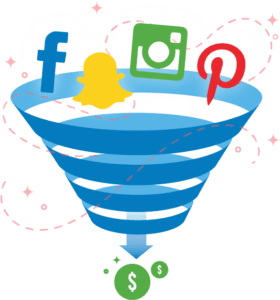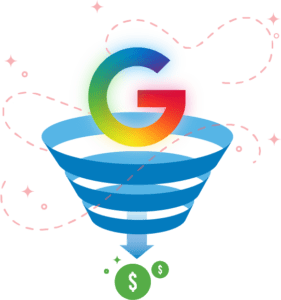With the clear prominence of social media in our day-to-day lives, there are countless opportunities to reach consumers in new and exciting ways. In fact, 21% of consumers are more likely to buy from brands they can follow on social. 37% of consumers find purchase inspiration through social media.
Putting social media at the top of your marketing funnel helps you ensure sustainable, long-term brand growth. But what exactly does that implementation look like?
Top of Funnel: Social Media
 It all begins at the top of the marketing funnel, where platforms like Facebook and Instagram serve as the “awareness and interest” piece. This is when you’re catching potential buyers in the earliest stages of their buying process and making crucial first impressions.
It all begins at the top of the marketing funnel, where platforms like Facebook and Instagram serve as the “awareness and interest” piece. This is when you’re catching potential buyers in the earliest stages of their buying process and making crucial first impressions.
Having a measurable social media advertising strategy in place to strategically influence your target audience can help you attract early adopters, build anticipation, and collect digital word of mouth momentum.
Consider implementing upper funnel keywords – simply put, the keywords that your upper funnel consumers typically search for – into your strategy. Analyze your data to determine what users are searching for when they find your site for the first time and make it easier for them to find your product when they use those words.
Facebook and Instagram also offer an opportunity to capture impulse-driven purchases. The best ecommerce Facebook ads show a product or idea that has broad appeal paired with a compelling offer, making it possible to convert a customer who wasn’t even searching for your product.
As you attempt to capture these impulse-driven purchases, you can increase your impact by expanding your reach. A great way to do this is through Lookalike Audiences, which allow you to upload your current audience list and receive list of new customers that are likely to be interested in your product. Making sure your paid social media ads are relevant in the first place will have a huge impact on their effectiveness.
If you already have a large audience, but want to increase your conversion rate, you can also create a retargeting campaign through Facebook.
Mid-Funnel: Google

Moving down the funnel, Google serves as the “intent and desire” piece where consumers ask the question, “Where can I find and buy the thing I’m looking for?”
At this point, the customer already knows what product they’re looking for. They just want to find the right fit. At this step, they will be weighing factors like price, convenience, and reviews. It is important to find characteristics of your product that set you apart from your competitors so you don’t get lost in this portion of the funnel.
You can still leverage retargeting strategies to ensure that your product shows up in the right place at the right time for your audience (right when they are ready to purchase). Just keep in mind that these consumers are mid-funnel, so your priorities should change – the consumer’s did, after all.
Bottom of Funnel: Amazon
 Toward the bottom of the funnel is Amazon, which serves as the “retention and action” piece. People don’t go to Amazon to shop; they go to buy.
Toward the bottom of the funnel is Amazon, which serves as the “retention and action” piece. People don’t go to Amazon to shop; they go to buy.
If you currently have at least 1,000 customers, then the clock is ticking for you to focus not only on Return on Ad Spend (ROAS) but also Return on Shipping Spend (ROSS). Combined with a focus on ROAS, focusing on ROSS can substantially increase return purchases and Average Order Value (AOV).
You should also be sure to consider Total Advertising Cost of Sale (TACoS) in addition to Advertising Cost of Sale (ACoS).
While Amazon is an essential portion of your marketing funnel, there are many challenges that come with it. These include maintaining control over your product’s pricing, gray market sellers, 1P price matching, counterfeiters, brand reputation, and duplicate ASINs.
If you’re interested in learning more about incorporating social media advertising into your full-funnel marketing strategy, check out some of our additional resources below:




